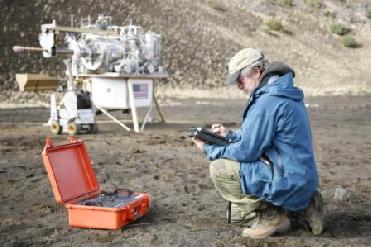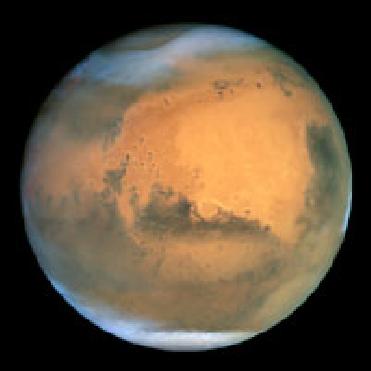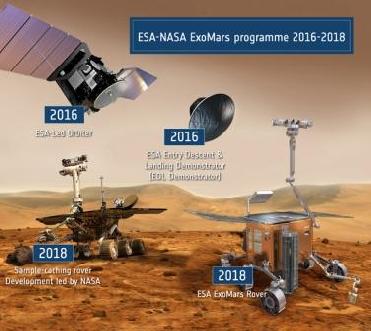
Phoenix spacecraft on Mars. Image credit: NASA/JPL-Calech/University of Arizona
WASHINGTON (BNS): After operating successfully for more than five months, NASA's Phoenix Mars Lander has ceased communications. Mission engineers at NASA said that as anticipated, seasonal decline in sunshine at the robot's arctic landing site was not providing enough sunlight for the solar arrays to collect the power necessary to charge batteries that operate the Lander's instruments.
NASA said the Lander sent the last message on November 2. According to mission engineers, the reason for the Phoenix going silent in addition to shorter daylight, is encountering of dustier sky, more clouds and colder temperatures as the northern Mars summer approaches autumn. The mission exceeded its planned operational life of three months to conduct and return science data, NASA said.
Phoenix Principal Investigator Peter Smith of the University of Arizona in Tucson said Phoenix had given some surprises, and he was confident of scientists pulling more gems from this trove of data for years to come.
Phoenix Project Manager Barry Goldstein at NASA's Jet Propulsion Laboratory in Pasadena, California said Phoenix not only met the tremendous challenge of landing safely, it accomplished scientific investigations on 149 of its 152 Martian days as a result of dedicated work by a talented team.
Meanwhile, Doug McCuistion, director of the Mars Exploration Programme at NASA Headquarters in Washington said Phoenix provided an important step to spur the hope that Mars was once habitable and possibly supported life. "Phoenix was supported by orbiting NASA spacecraft providing communications relay while producing their own fascinating science. With the upcoming launch of the Mars Science Laboratory, the Mars Programme never sleeps."
NASA said the project team would be listening carefully during the next few weeks to hear if Phoenix revives and phones home. However, engineers now believe that it is unlikely because of the worsening weather conditions on Mars. While the spacecraft's work has ended, the analysis of data from the instruments is in its earliest stages, they said.
The premier scientific body said Phoenix's preliminary science accomplishments advance the goal of studying whether the Martian arctic environment has ever been favourable for microbes. Additional findings include documenting a mildly alkaline soil environment unlike any found by earlier Mars missions; finding small concentrations of salts that could be nutrients for life; discovering perchlorate salt, which has implications for ice and soil properties; and finding calcium carbonate, a marker of effects of liquid water.
According to NASA, Phoenix findings also support the goal of learning the history of water on Mars. These findings include excavating soil above the ice table, revealing at least two distinct types of ice deposits; observing snow descending from clouds; providing a mission-long weather record, with data on temperature, pressure, humidity and wind; observations of haze, clouds, frost and whirlwinds; and coordinating with NASA's Mars Reconnaissance Orbiter to perform simultaneous ground and orbital observations of Martian weather, they added.
Launched on August 4, 2007, Phoenix landed on May 25, 2008, farther north than any previous spacecraft to land on the Martian surface. The Lander dug, scooped, baked, sniffed and tasted the Red Planet's soil. "Among early results, it verified the presence of water-ice in the Martian sub-surface, which NASA's Mars Odyssey orbiter first detected remotely in 2002. Phoenix's cameras also returned more than 25,000 pictures from sweeping vistas to near the atomic level using the first atomic force microscope ever used outside Earth," NASA said.
 Previous Article
Previous Article Next Article
Next Article













The Indian Air Force, in its flight trials evaluation report submitted before the Defence Ministry l..
view articleAn insight into the Medium Multi-Role Combat Aircraft competition...
view articleSky enthusiasts can now spot the International Space Station (ISS) commanded by Indian-American astr..
view article